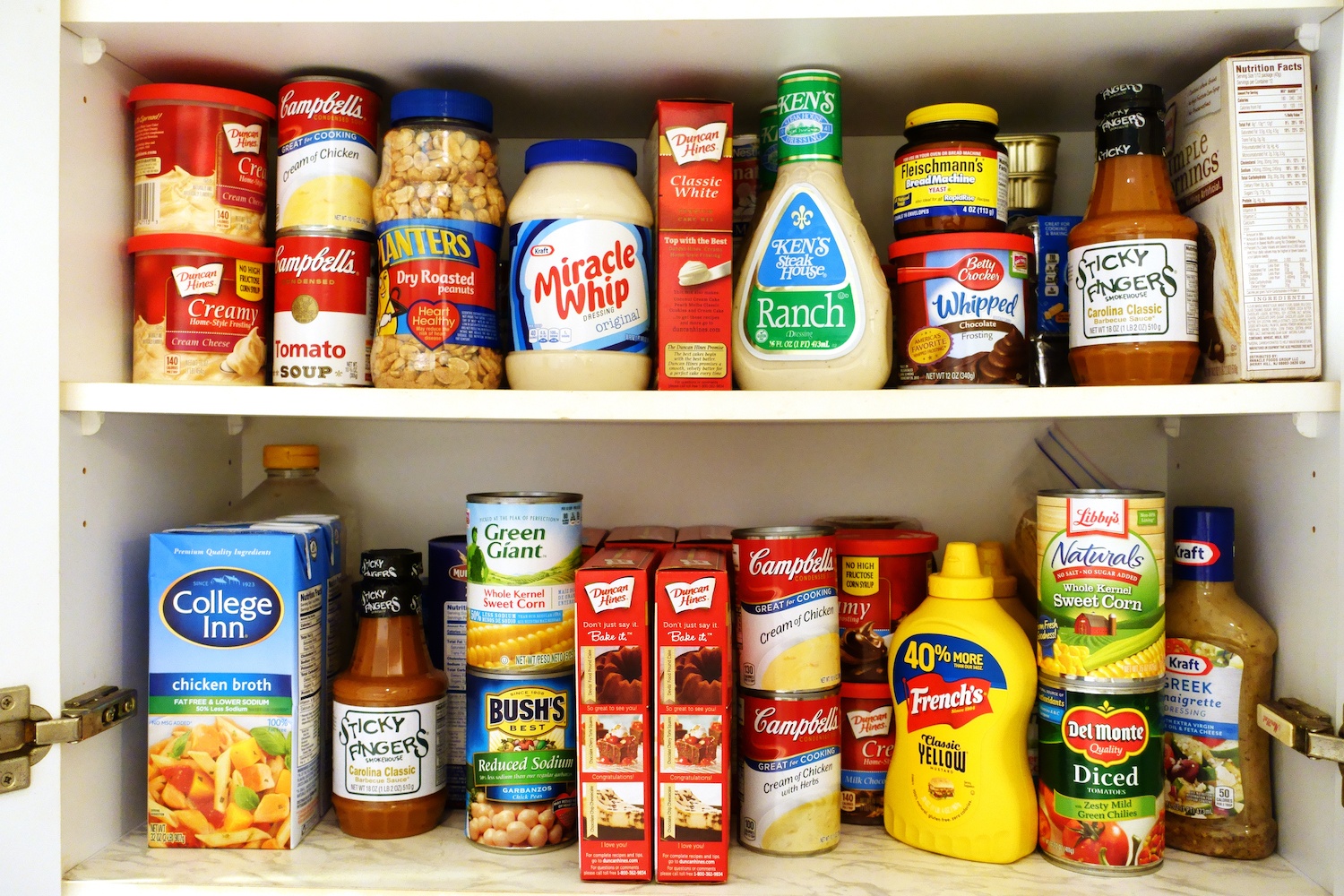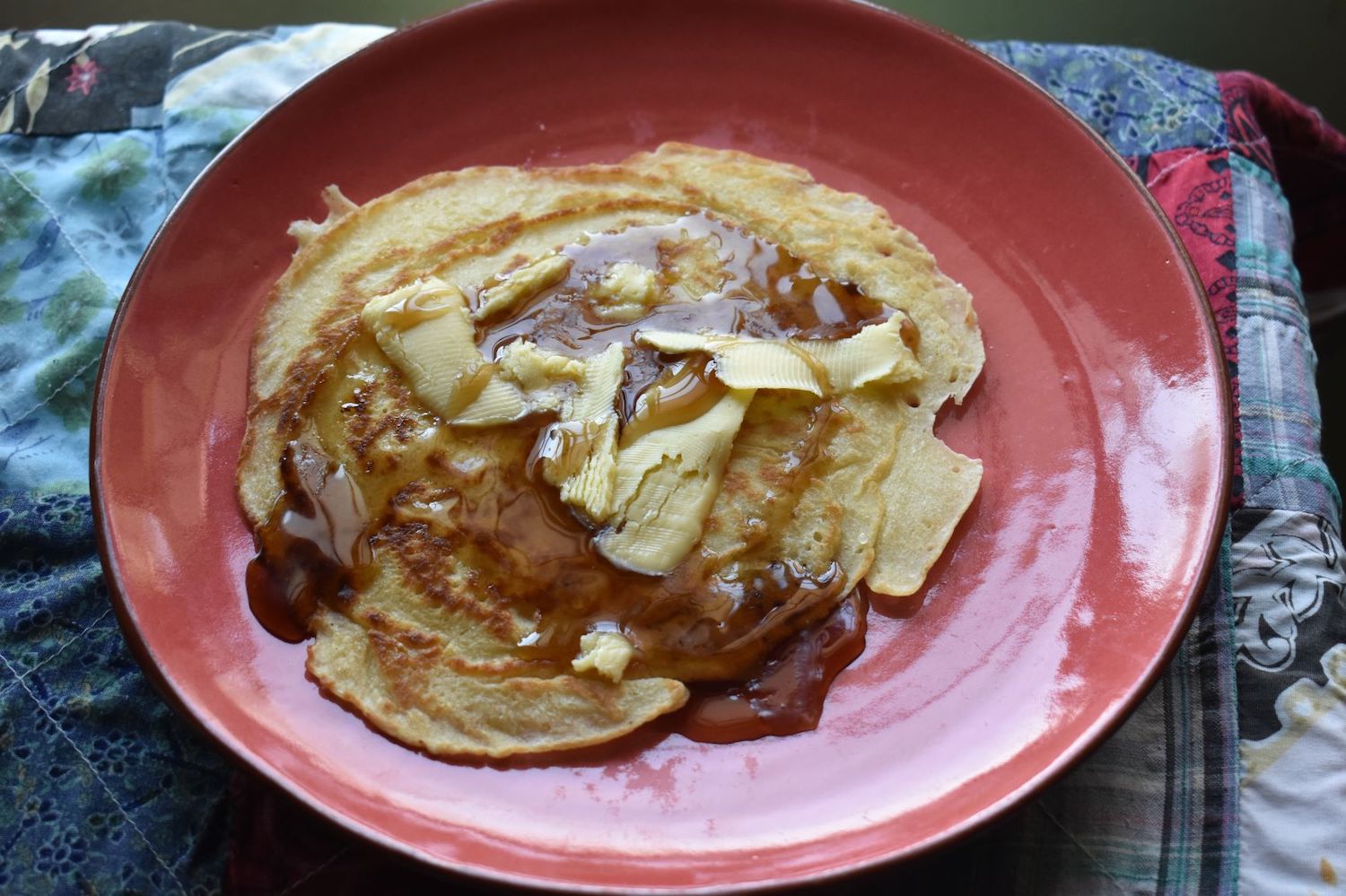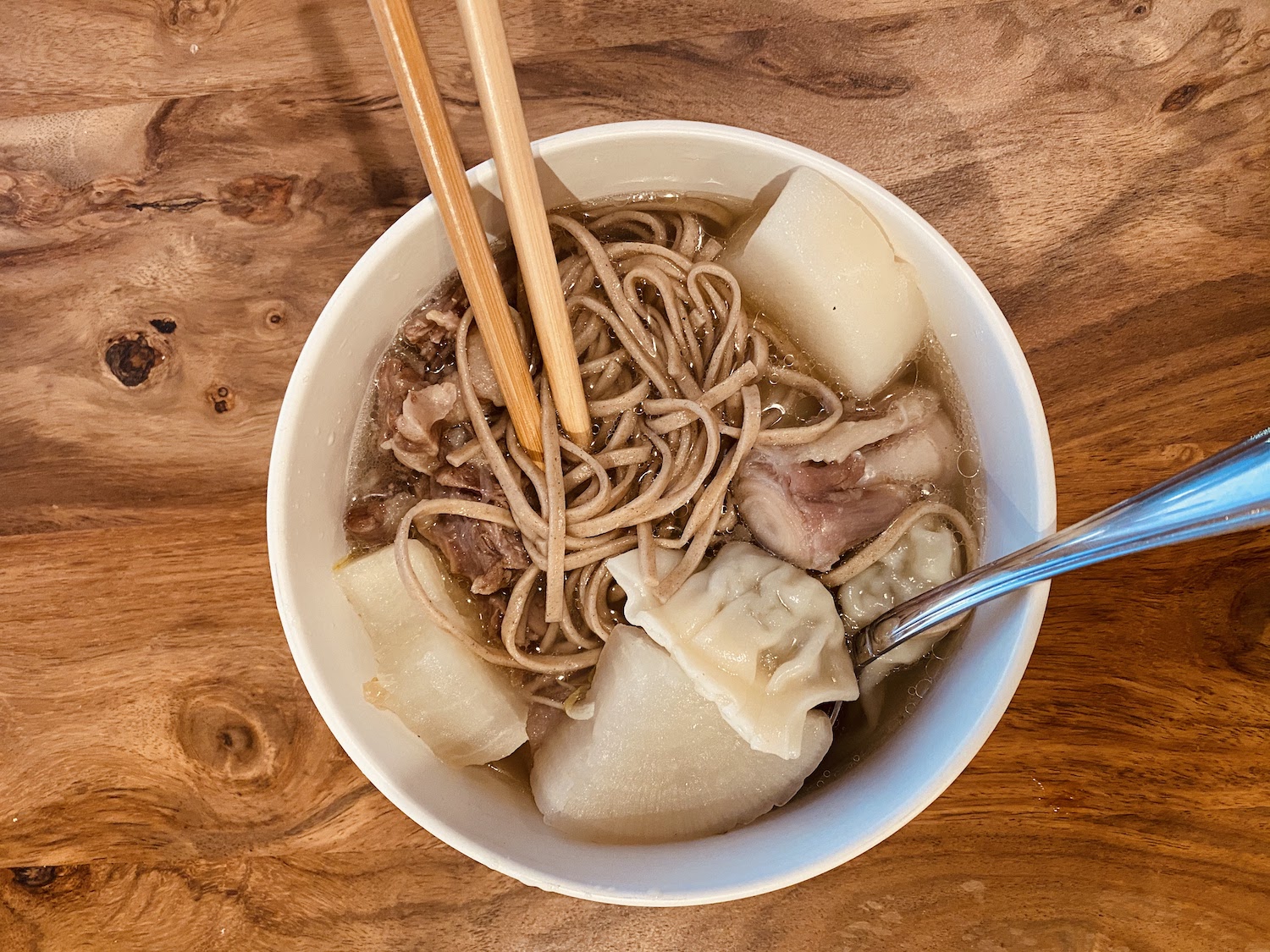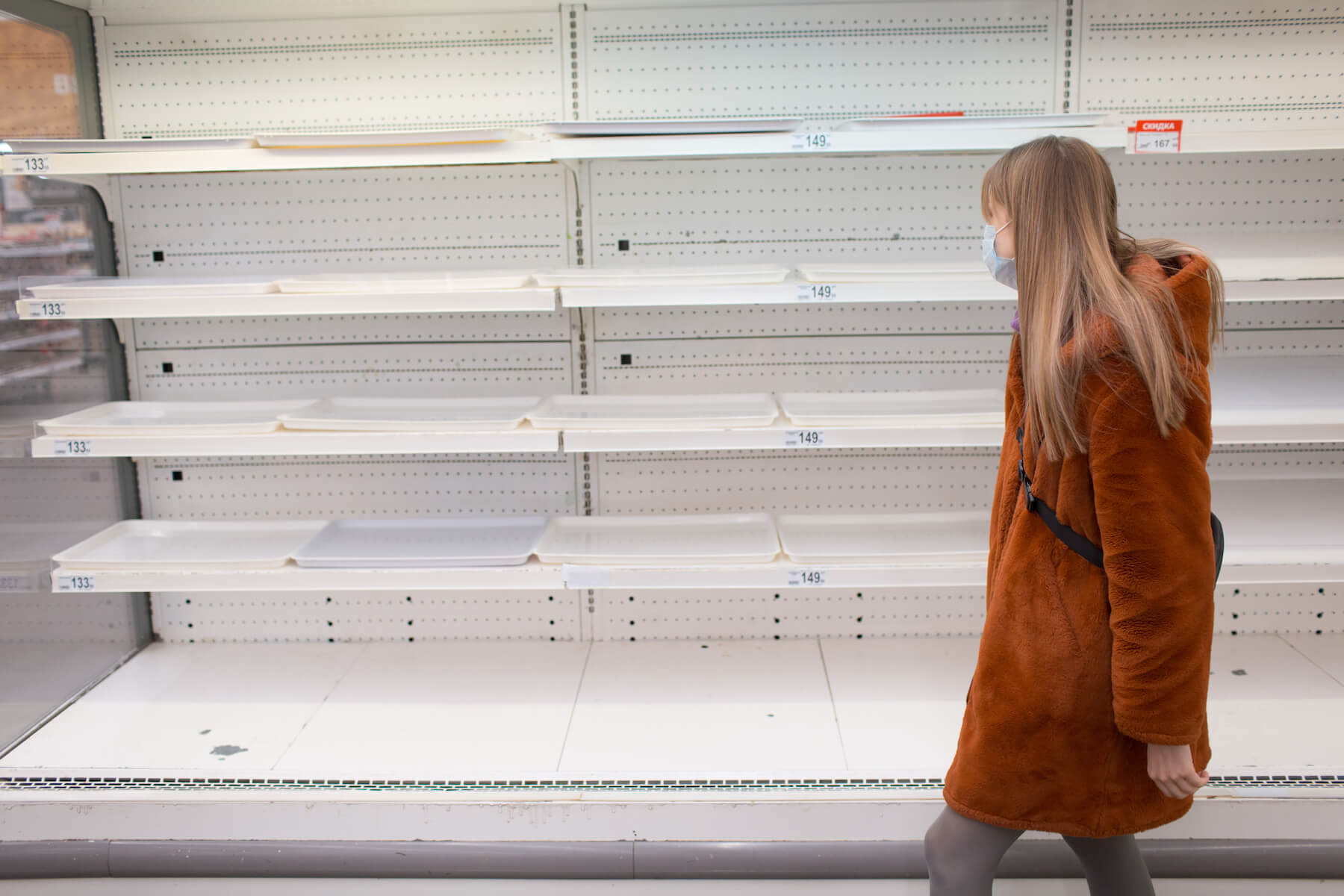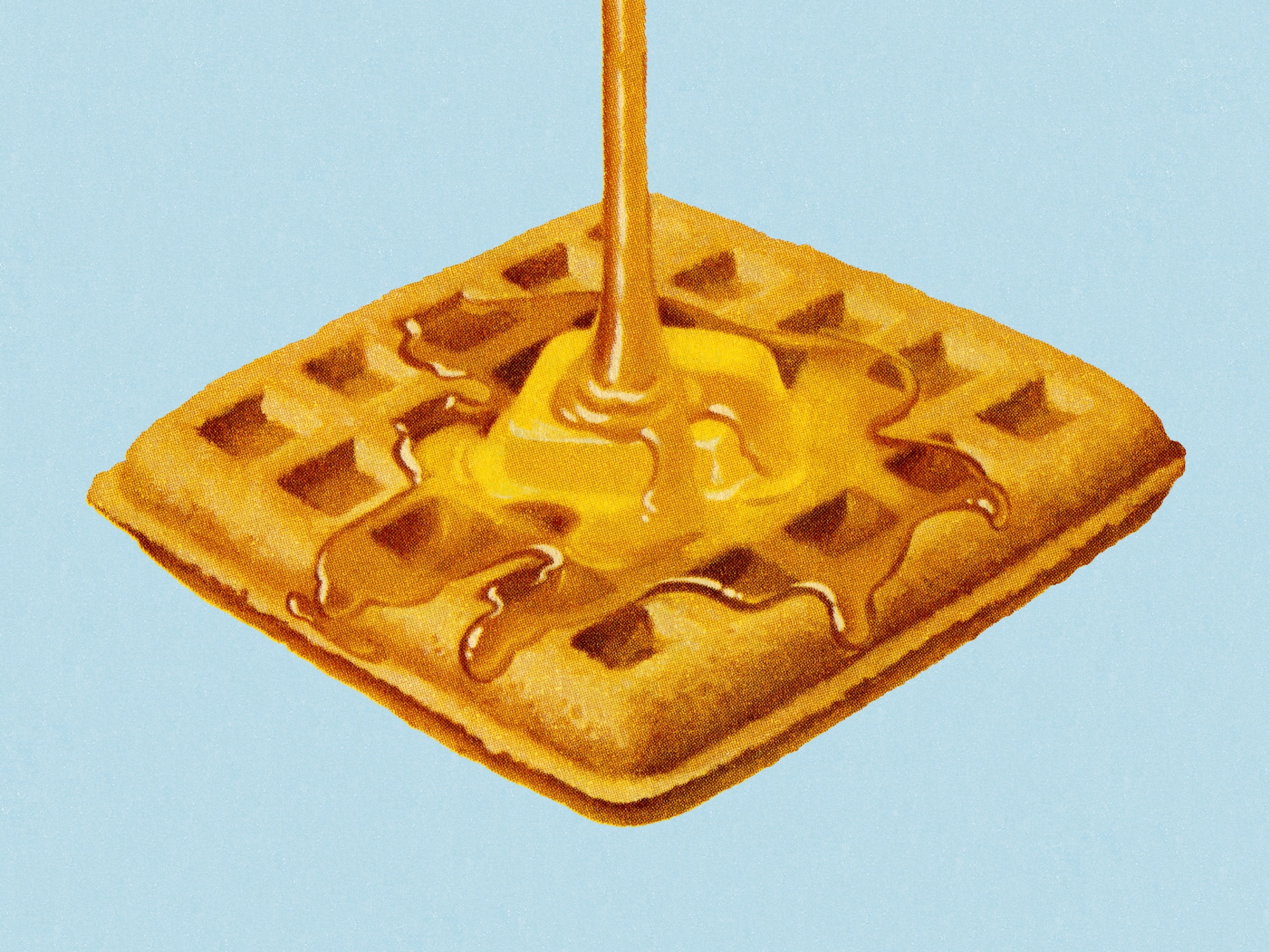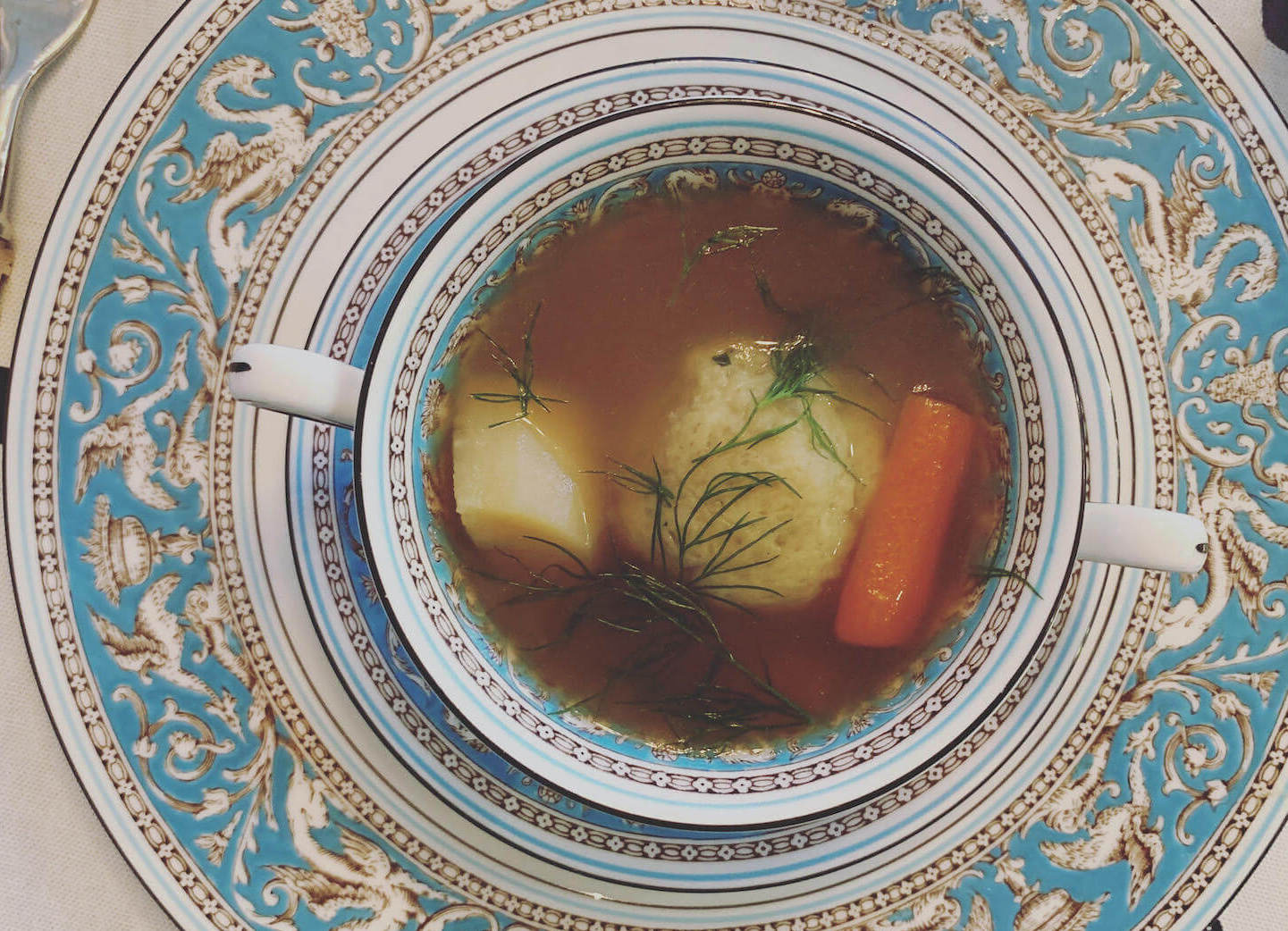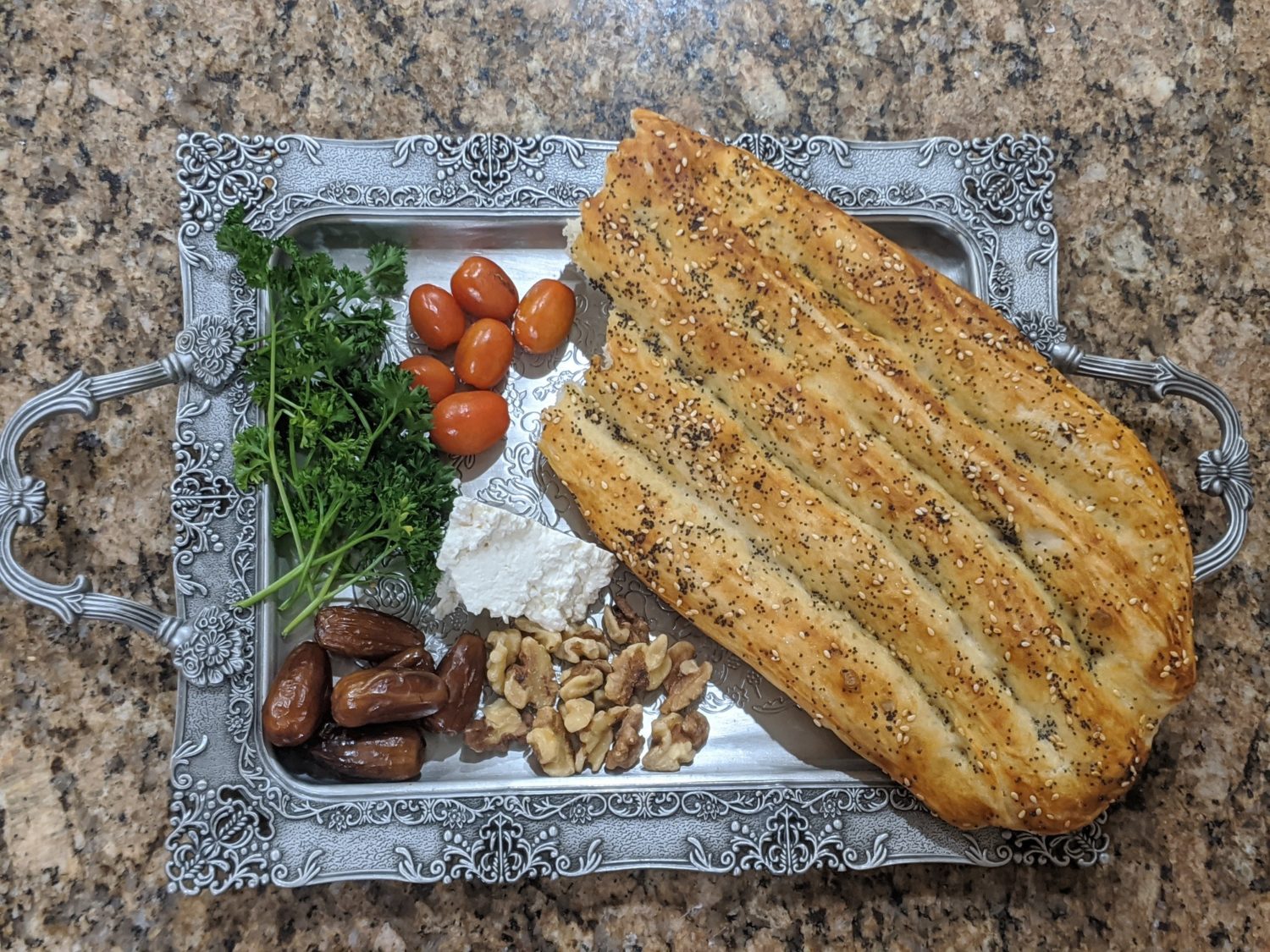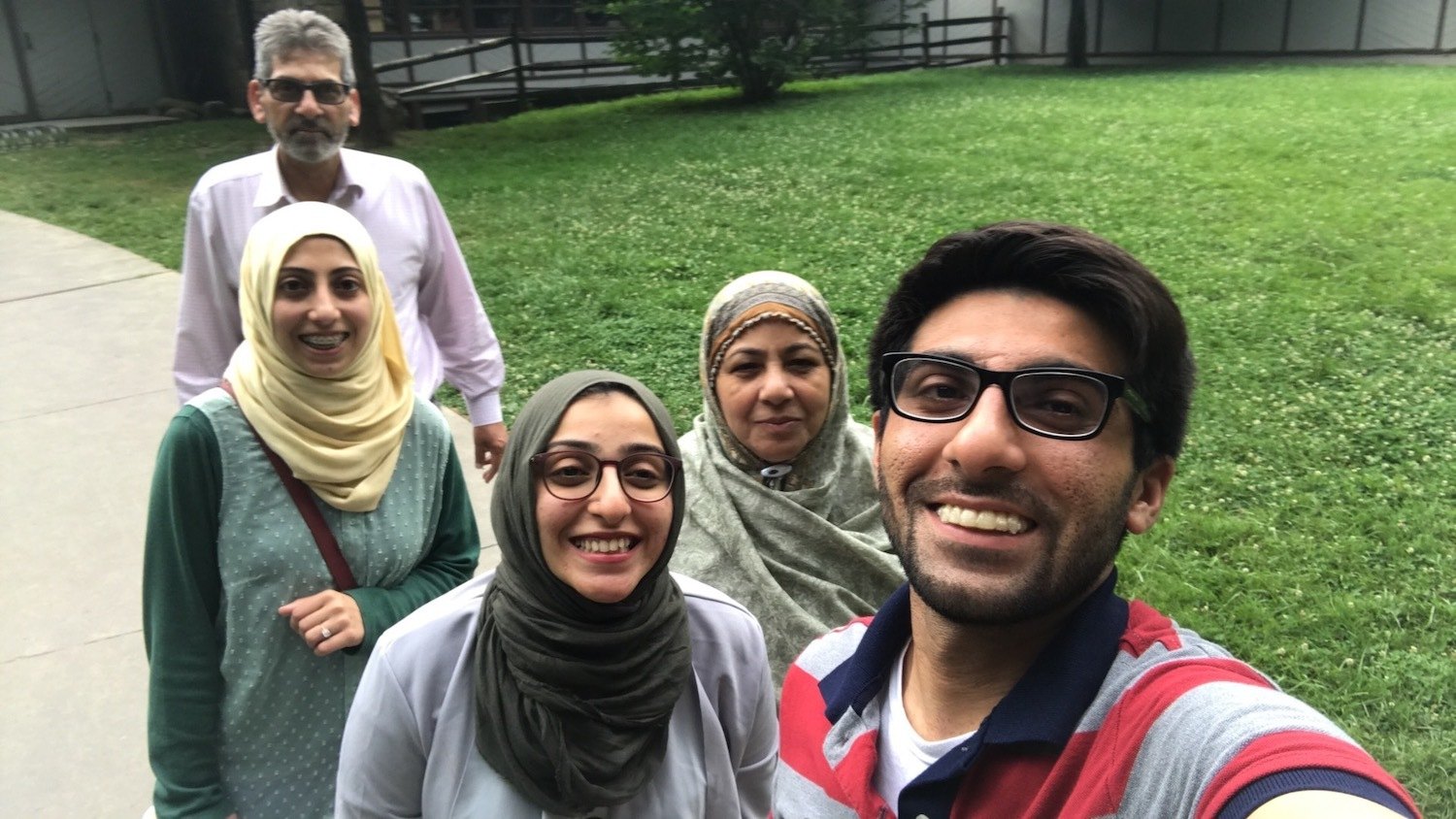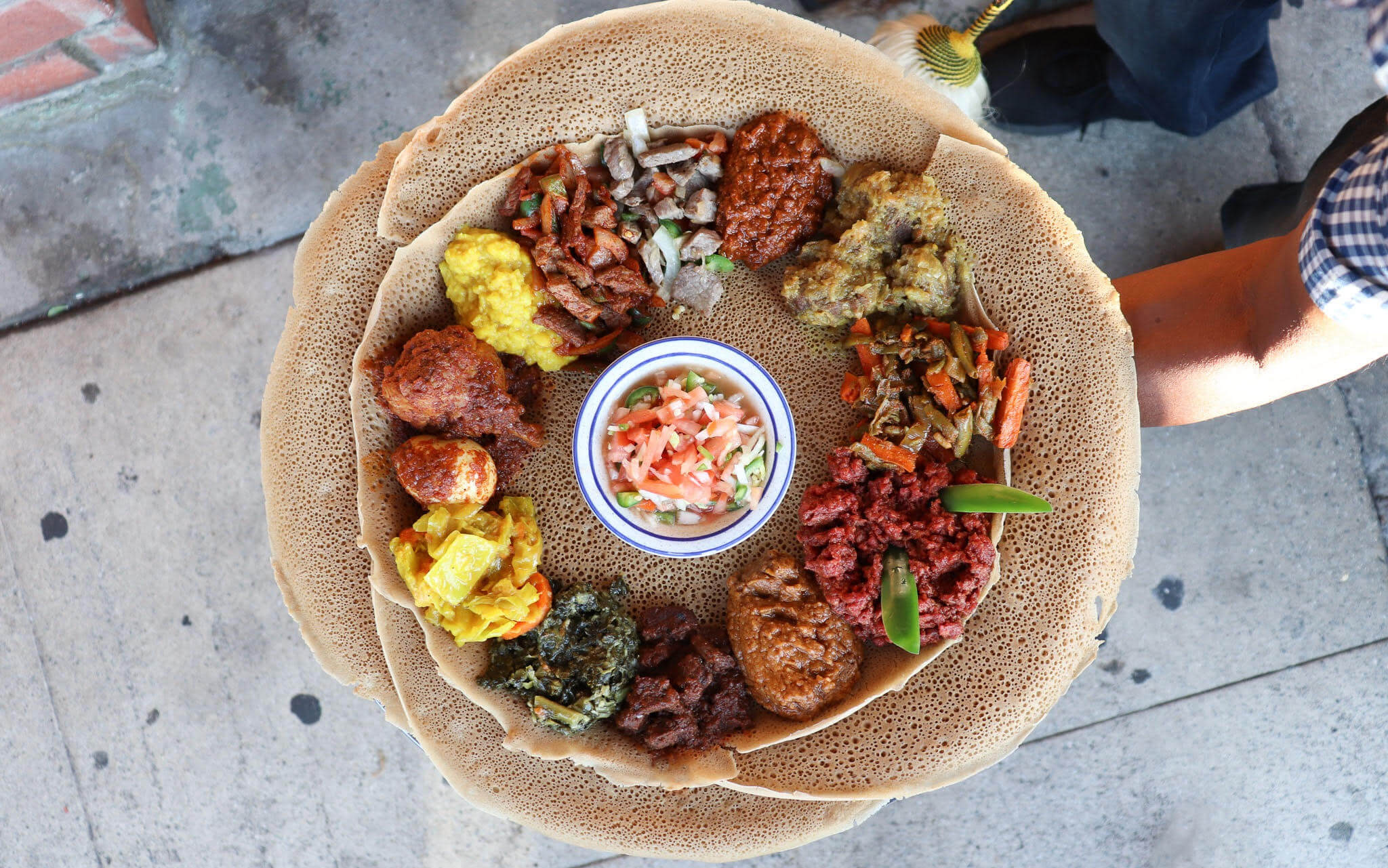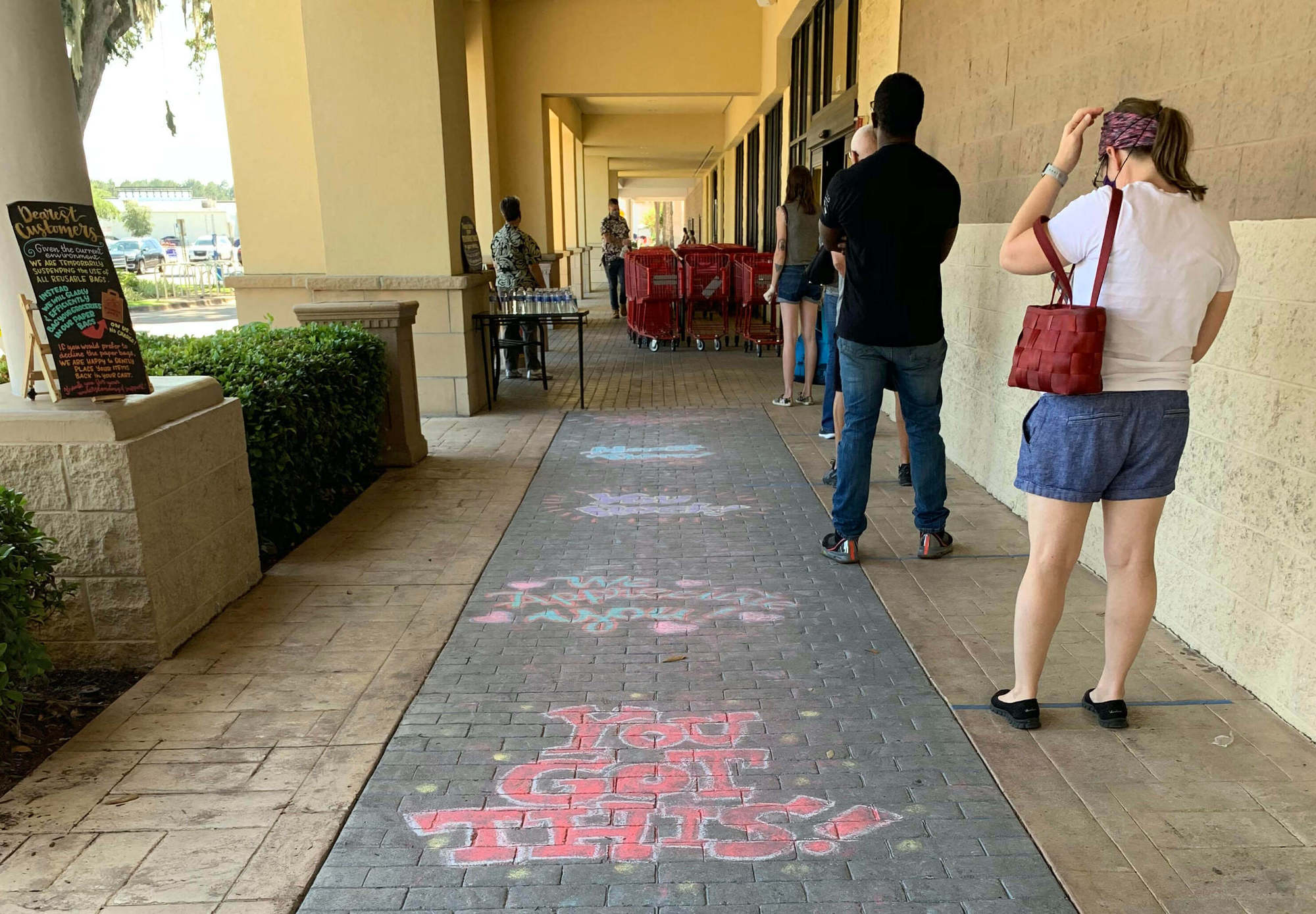
Yelena Moroz Alpert
As I stand six feet apart from my masked compatriots to enter Trader Joe’s, I can’t shake an eerie feeling of déjà vu.
In the university town of Gainesville, Florida, where I live, the ongoing and unpredictable Covid 19 pandemic—there have been over 650,000 cases and 12,000 deaths across the state, according to a New York Times database—has transformed the experience of shopping for food. People wear masks, tensions can run high, and dangers of infection lurk everywhere. What was once a mundane task now feels like a high-stakes gamble. But while I am one of the many Americans who now feel uncomfortable going to the grocery store, it’s not necessarily because I’m afraid of getting sick. For me, the long lines and empty shelves bring back alarming memories from the past.
As I stand six feet apart from my masked compatriots to enter Trader Joe’s, I can’t shake an eerie feeling of déjà vu. Even as toilet paper supplies have returned to normal, I think back to being a 7-year-old in Belarus living through Perestroika, a period of change during the Soviet Union’s slow collapse in the late 1980s and early ’90s.
Perestroika roughly translates to “restructuring,” though in reality it was anything but. As a child, I could not understand the scope of my country’s transition, which was a time of intense political turmoil and skyrocketing crime. What I do remember clearly are the empty grocery stores—the once-abundant bakery and dairy sections emptying into bare counters and cavernous glass cases. And then the lines started snaking around stores. Lines for bread. Lines for butter. This lasted for years.
As a child, I could not understand the scope of my country’s transition—what I do remember clearly are the empty grocery stores.
We lived in a two-room flat inside a nine-story apartment building. Whenever we heard that the store down the street got a shipment of something we wanted—herring, socks—my mom would drop whatever she was doing to stand in line for as long as three hours, ration booklet in hand. I stood in lines, wearing my leopard-printed shuba, or fur coat, and my bunny-fur hat with snowball-sized pom-poms, looking down on the gray concrete floors in perpetual boredom. Occasionally, the sight of something useless, like a small display of white collars that were sewn on to the itchy brown-and-black Soviet school uniforms, distracted me from the wait.
One time, my mom traded a vodka ration ticket for two bath towels. Another time, we waited close to an hour for 400 grams of butter, roughly 3 ½ sticks—it was distributed 200 grams per person, and my petite hands qualified to get our family double.
Prior to the pandemic, the amusement park-like atmosphere of American grocery stores—with their endless variety, well-stocked shelves, and plentiful free samples—practically wiped my memory of shortages. Thirty years later, I am pretty sure I won’t have to trade vodka coupons for a box of mac and cheese. But standing in long grocery store lines again has released my long forgotten fear of scarcity.
The appearance of scarcity has awakened a part of me that I thought had gone to sleep forever. It is the line itself that unnerves me.
When I’m finally allowed to enter the store, I feel like a lab rat released into a labyrinth, hunting for simple things like bread and butter. These morsels of sustenance aren’t just about food: I’ve realized how much I’ve come to rely, psychologically, on routinely filling my cart with certain staples. Few weeks ago, when I saw all of the butter had sold out, I had an emotional hiccup—my pulse quickening as I stared into the vacant space where packs of butter should have been. Intellectually, I knew this was probably a fluke—likely a blip brought about by the sudden surge of quarantine baking efforts. And yet my body tensed up, and my thoughts trailed into “what if” scenarios. Now, I buy at least two packages of unsalted butter packs every time I shop—no matter that my freezer is accumulating a small trove of butter sticks.
I am not trying to equate my current circumstances with what my parents went through. Even with the temporary shortages across the country, I know that personally I am in no real danger of going without. Even then, we rarely went without. Despite the excruciating lines and lackluster grocery store displays, I have no memory of hunger. We always had food on the table—as we do now.
And yet the appearance of scarcity has awakened a part of me that I thought had gone to sleep forever. It is the line itself that unnerves me. I keep telling myself that this is temporary, though the fact that here I am standing in line in America is not something that I ever thought would happen. All I can do now is wait for this to be over, just like I did as a child.
